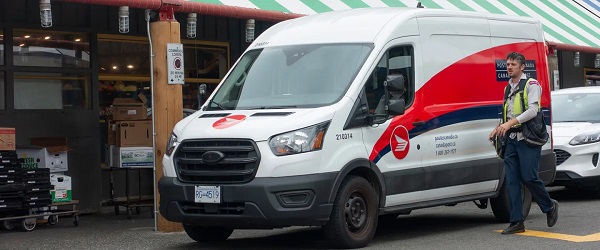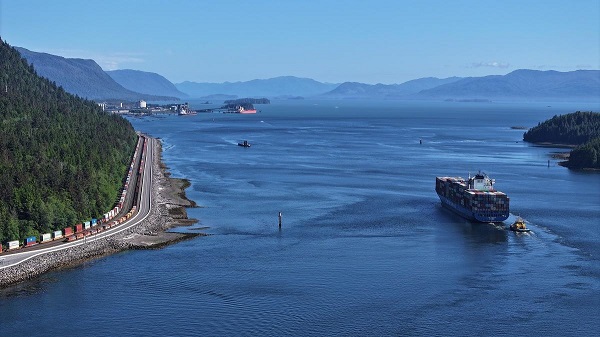Business
INDIGENOUS PARTICIPATION IS IMPORTANT TO THE CANADIAN WIND ENERGY INDUSTRY, WITH OVER 35 COMMUNITIES ALREADY BENEFITTING FROM WIND PROJECTS

INDIGENOUS PARTICIPATION IS IMPORTANT TO THE CANADIAN WIND ENERGY INDUSTRY, WITH OVER 35 COMMUNITIES ALREADY BENEFITTING FROM WIND PROJECTS

This article was written in 2019, prior to the July 1, 2020, creation of the Canadian Renewable Energy Association, which joined CanWEA with the Canadian Solar Industries Association.
Canada’s wind energy industry has been involved with and benefited over 35 Indigenous communities in the country. As the voice of the industry, the Canadian Wind Energy Association (CanWEA) has been a supporter of Indigenous participation in Canadian wind projects. One of the ways that CanWEA has been active is by being a “Clean Energy Collaborator” with the innovative 20/20 Catalysts Program, which supports clean energy development in Indigenous communities. An example of this collaboration has included working with Catalysts like Chantelle Cardinal (2018 cohort) on convening Indigenous leaders at CanWEA events to enable meaningful discussions about the obstacles and opportunities for Indigenous involvement in wind energy projects. This collaboration is important, since “many of Alberta’s Indigenous communities are focused on opportunities to participate in the clean energy development occurring in their Traditional Territory and to creating opportunity on Reserve and on Settlement lands,” as Ms. Cardinal told CanWEA’s 2019 Spring Forum in Banff, Alberta. In recognition of the effectiveness of the 20/20 Catalysts Program, CanWEA honoured the program with its 2018 Group Leadership Award, which recognizes visionary leaders and clean energy pioneers for their outstanding contribution to the Canadian wind industry.
Canada’s wind energy industry has been involved with and benefited over 35 Indigenous communities in the country.
As the voice of the industry, the Canadian Wind Energy Association (CanWEA) has been a supporter of Indigenous participation in Canadian wind projects. One of the ways that CanWEA has been active is by being a “Clean Energy Collaborator” with the innovative 20/20 Catalysts Program, which supports clean energy development in Indigenous communities.
Chantelle Cardinal, a Saddle Lake Band member from Whitefish Lake #128 and a Catalyst from the 2018 cohort, is one of the Catalysts with whom CanWEA has been working on convening Indigenous leaders at CanWEA events to enable meaningful discussions about the obstacles and opportunities for Indigenous involvement in wind energy projects in Alberta. She has been working with First Nations in Alberta for over 14 years and is currently the Director of Business Development & Environment for the G4 (Stoney Nakoda-Tsuut’ina Tribal Council).
Effective Indigenous and public engagement are cornerstones for successful wind energy development. CanWEA has developed Best Practices for Indigenous and Public Engagement to help industry members consult, engage and communicate on wind energy developments.
“Many of Alberta’s Indigenous communities are focused on opportunities to participate in the clean energy development occurring in their Traditional Territory and to creating opportunity on Reserve and on Settlement lands,” Ms. Cardinal told CanWEA’s 2019 Spring Forum in Banff, Alberta. “Wind energy projects across Canada have demonstrated exemplary, mutually-beneficial partnerships with Indigenous peoples. From community involvement and investment, to contracts and long-term employment, these partnerships are blazing a new trail for how to facilitate collaborative Indigenous engagement and access this country’s vast renewable resources.”
At the Spring Forum, she led an Indigenous panel discussion on the strengths, benefits and lessons from Indigenous participation in wind energy developments. A key point was that clean energy projects can contribute to energy and economic sovereignty for Indigenous communities.
In recognition of its successes, CanWEA awarded the 20/20 Catalysts Program with its 2018 Group Leadership Award, which recognizes visionary leaders and clean energy pioneers for their outstanding contribution to the Canadian wind industry. (This story was written in 2019, prior to the creation of Canadian Renewable Energy Association).
Thanks to Todayville for helping us bring our members’ stories of collaboration and innovation to the public.
Click to read a foreward from JP Gladu, Chief Development and Relations Officer, Steel River Group; Former President and CEO, Canadian Council for Aboriginal Business.

JP Gladu, Chief Development and Relations Officer, Steel River Group; Former President & CEO, Canadian Council for Aboriginal Business
Click to read comments about this series from Jacob Irving, President of the Energy Council of Canada.

Jacob Irving, President of Energy Council of Canada
The Canadian Energy Compendium is an annual initiative by the Energy Council of Canada to provide an opportunity for cross-sectoral collaboration and discussion on current topics in Canada’s energy sector. The 2020 Canadian Energy Compendium: Innovations in Energy Efficiency is due to be released November 2020.
Click below to read more stories from Energy Council of Canada’s Compendium series.
INDUSTRY-INDIGENOUS RELATIONS: A TREND TOWARD DEEPER ENGAGEMENT
Agriculture
Canada’s supply management system is failing consumers

This article supplied by Troy Media.
The supply management system is cracking. With imports climbing, strict quotas in place and Bill C202 on the table, we’re struggling to feed ourselves
Canada’s supply management system, once seen as a pillar of food security and agricultural self-sufficiency, is failing at its most basic function:
ensuring a reliable domestic supply.
According to the Canadian Association of Regulated Importers, Canada imported more than 66.9 million kilograms of chicken as of June 14, a 54.6 per cent increase from the same period last year. That’s enough to feed 3.4 million Canadians for a full year based on average poultry consumption—roughly 446 million meals. Under a tightly managed quota system, those meals were supposed to be produced domestically. Instead imports now account for more than 12 per cent of this year’s domestic chicken production, revealing a growing dependence on foreign supply.
Supply management is Canada’s system for regulating dairy, poultry and egg production. It uses quotas and fixed prices to match domestic supply with demand while limiting imports, intended to protect farmers from global price swings and ensure stable supply.
To be fair, the avian influenza outbreak has disrupted poultry production and partially explains the shortfall. But even with that disruption, the numbers are staggering. Imports under trade quotas set by the World Trade Organization, the Canada-United States Mexico Agreement and the Comprehensive and Progressive Agreement for Trans-Pacific Partnership are running at or near their allowable monthly share—known as pro-rata
levels—signalling not just opportunity, but urgency. Supplementary import permits, meant to be used only in emergencies, have already surpassed 48 million kilograms, exceeding total annual import volumes in some previous years. This isn’t a seasonal hiccup. It’s a systemic failure.
The system, designed to buffer domestic markets from global volatility, is cracking under internal strain. When emergency imports become routine, we have to ask: what exactly is being managed?
Canada’s most recent regulated chicken production cycle, which ended May 31, saw one of the worst shortfalls in over 50 years. Strict quota limits stopped farmers from producing more to meet demand, leaving consumers with higher grocery bills and more imported food, shaking public confidence in the system.
Some defenders insist this is an isolated event. It’s not. For the second straight week, Canada has hit pro-rata import levels across all chicken categories. Bone-in and processed poultry, once minor players in emergency import programs, are now essential just to keep shelves stocked.
And the dysfunction doesn’t stop at chicken. Egg imports under the shortage allocation program have already topped 14 million dozen, a 104 per cent jump from last year. Not long ago, Canadians were mocking high U.S. egg prices. Now theirs have fallen. Ours haven’t.
All this in a country with $30 billion in quota value, supposedly designed to protect domestic production and reduce reliance on imports. Instead, we’re importing more and paying more.
Rather than addressing these failures, Ottawa is looking to entrench them. Bill C202, now before the Senate, seeks to shield supply management from future trade talks, making reform even harder. So we must ask: is this really what we’re protecting?
Meanwhile, our trading partners are taking full advantage. Chile, for instance, has increased chicken exports to Canada by more than 63 per cent, now accounting for nearly 96 per cent of CPTPP-origin imports. While Canada doubles down on protectionism, others are gaining long-term footholds in our market.
It’s time to face the facts. Supply management no longer guarantees supply. When a system meant to ensure resilience becomes a source of fragility, it’s no longer an asset—it’s an economic liability.
Dr. Sylvain Charlebois is a Canadian professor and researcher in food distribution and policy. He is senior director of the Agri-Food Analytics Lab at Dalhousie University and co-host of The Food Professor Podcast. He is frequently cited in the media for his insights on food prices, agricultural trends, and the global food supply chain.
Troy Media empowers Canadian community news outlets by providing independent, insightful analysis and commentary. Our mission is to support local media in helping Canadians stay informed and engaged by delivering reliable content that strengthens community connections and deepens understanding across the country.
Business
Prairie provinces and Newfoundland and Labrador see largest increases in size of government

From the Fraser Institute
By Jake Fuss and Grady Munro
A recent study found that Canada has experienced one of the largest increases in the size of government of any advanced country over the last decade. But within Canada, which provinces have led the way?
The size of government refers to the extent to which resources within the economy are controlled and directed by the government, and has important implications for economic growth, living standards, and economic freedom—the degree to which people are allowed to make their own economic choices.
Too much of anything can be harmful, and this is certainly true regarding the size of government. When government grows too large it begins to take on roles and resources that are better left to the private sector. For example, rather than focusing on core functions like maintaining the rule of law or national defence, a government that has grown too large might begin subsidizing certain businesses and industries over others (i.e. corporate welfare) in order to pick winners and losers in the market. As a result, economic growth slows and living standards are lower than they otherwise would be.
One way to measure the size of government is by calculating total general government spending as a share of the economy (GDP). General government spending refers to spending by governments at all levels (federal, provincial, and municipal), and by measuring this as a share of gross domestic product (GDP) we can compare across jurisdictions of different sizes.
A recent study compared the size of government in Canada as a whole with that of 39 other advanced economies worldwide, and found that Canada experienced the second-largest increase in the size of government (as a share of the economy) from 2014 to 2024. In other words, since 2014, governments in Canada have expanded their role within the economy faster than governments in virtually every other advanced country worldwide—including all other countries within the Group of Seven (France, Germany, Italy, Japan, the United Kingdom, and the United States). Moreover, the study showed that Canada as a whole has exceeded the optimal size of government (estimated to fall between 24 and 32 per cent of GDP) at which a country can maximize their economic growth. Beyond that point, growth slows and is lower than it otherwise would be.
However, Canada is a decentralized country and provinces vary as to the extent to which governments direct overall economic activity. Using data from Statistics Canada, the following charts illustrate which provinces in Canada have the largest size of government and which have seen the largest increases since 2014.

The chart above shows total general government spending as a share of GDP for all ten provinces in 2023 (the latest year of available provincial data). The size of government in the provinces varies considerably, ranging from a high of 61.4 per cent in Nova Scotia to a low of 30.0 per cent in Alberta. There are geographical differences, as three Atlantic provinces (Nova Scotia, Prince Edward Island, and New Brunswick) have the largest governments while the three western-most provinces (Alberta, Saskatchewan, and British Columbia) have the smallest governments. However, as of 2023, all provinces except Alberta exceeded the optimal size of government—which again, is between 24 and 32 per cent of the economy.

To show which provinces have experienced the greatest increase in the size of government in recent years, the second chart shows the percentage point increase in total general government spending as a share of GDP from 2014 to 2023. It should be noted that this is measuring the expansion of the federal government’s role in the economy—which has been substantial nationwide—as well as growth in the respective provincial and municipal governments.
The increases in the size of government since 2014 are largest in four provinces: Newfoundland and Labrador (10.82 percentage points), Alberta (7.94 percentage points), Saskatchewan (7.31 percentage points), and Manitoba (7.17 percentage points). These are all dramatic increases—for perspective, in the study referenced above, Estonia’s 6.66 percentage point increase in its size of government was the largest out of 40 advanced countries.
The remaining six provinces experienced far lower increases in the size of government, ranging from a 2.74 percentage point increase in B.C. to a 0.44 percentage point increase in Quebec. However, since 2014, every province in Canada has seen government expand its role within the economy.
Over the last decade, Canada has experienced a substantial increase in the size of total government. Within the country, Newfoundland and Labrador and the three Prairie provinces have led the way in growing their respective governments.
-

 Business2 days ago
Business2 days agoLatest shakedown attempt by Canada Post underscores need for privatization
-

 Business2 days ago
Business2 days agoWhy it’s time to repeal the oil tanker ban on B.C.’s north coast
-

 Alberta2 days ago
Alberta2 days agoPierre Poilievre – Per Capita, Hardisty, Alberta Is the Most Important Little Town In Canada
-

 Aristotle Foundation2 days ago
Aristotle Foundation2 days agoHow Vimy Ridge Shaped Canada
-

 MxM News2 days ago
MxM News2 days agoUPenn strips Lia Thomas of women’s swimming titles after Title IX investigation
-

 Alberta1 day ago
Alberta1 day agoAlberta Provincial Police – New chief of Independent Agency Police Service
-

 Energy2 days ago
Energy2 days agoIf Canada Wants to be the World’s Energy Partner, We Need to Act Like It
-

 International2 days ago
International2 days agoCBS settles with Trump over doctored 60 Minutes Harris interview






